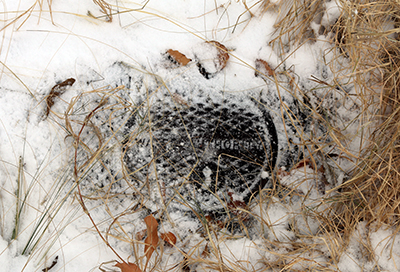The Water Authority’s rate structure serves two purposes:
1) To recover the operational costs associated with running a utility (e.g., delivering water to our customers, collecting and treating wastewater, and maintaining our infrastructure to ensure reliable service); and
2) To encourage all our customers to conserve.
In order to meet both of these goals, there are two components that determine your bill each month.
- The fixed charge. This is determined by your meter size and stays the same every month. Larger meter sizes have a higher fixed charge.
- The commodity charge. This is determined by how much water you use each month, so it changes. The commodity charge for each unit of water (1 unit = 748 gallons) is the same for all customers, so as you use more units the overall charge increases.
For most customers, their winter water bills are the lowest of the year. And yet, it is very important to be aware of your winter water use and how it relates to your water rates.
Based on your use during winter months of December-March, the Water Authority calculates your winter water average (WWA). Your winter water average is used in two rate calculations.
1) During the irrigation season (April – October), your WWA sets your conservation average which determines how much water you can use before conservation surcharges are assessed to your account. For example, if your WWA is 6 units (1 unit = 748 gallons), you can use up to 12 units per month before any conservation surcharges are assessed. This might make you think that using more water during the winter will help you save money on your bill during the summer. BUT….
2) The WWA serves a second purpose which is to determine your sewer rate for the entire following year. The Water Authority assumes that all the water you use during the winter (Dec – March) is going into the sewer system after use (rather than onto your landscape). So, your sewer charges are based on how much you used during the winter.
Use more during the winter and not only will you have to pay for the water you used and probably didn’t need, but you’ll also be driving your sewer rates up for the entire following year.
Some things you might be wondering about now that you know about the WWA and how it is calculated:
- For customers with a very low winter water use, the Water Authority sets their WWA at 4 for the purpose of calculating their irrigation season surcharges, but they are charged for sewer usage based on their actual winter water use.
- For customers with a very high winter water use, the Water Authority caps their conservation average at 15. This was established so that high water users could not avoid incurring irrigation surcharges.
- You can find your WWA on your water bill under the heading “Winter Average”. For most customers their Winter Average and their Conservation Average are the same. But, for customers with a very low or high winter usage, their conservation average will be adjusted as described in the two bullets above.
- There is a “low use” discount to reward customers who conserve all year long. During the billing months of April – October, if you use less than 150% of what all the other customers with your meter size used on average during the winter, you receive a 50% discount on the outdoor water use commodity charge portion of your bill.
- If you have a leak during the winter, it is important to contact the Water Authority’s Customer Service Division at 842-WATR (9287), Option 0 and review your account with a Customer Account Representative for any applicable adjustments.
A second article on water rates and conservation surcharges will follow in the spring!

Author: Katherine Yuhas, Water Resources Manager with Albuquerque Bernalillo County Water Utility Authority

